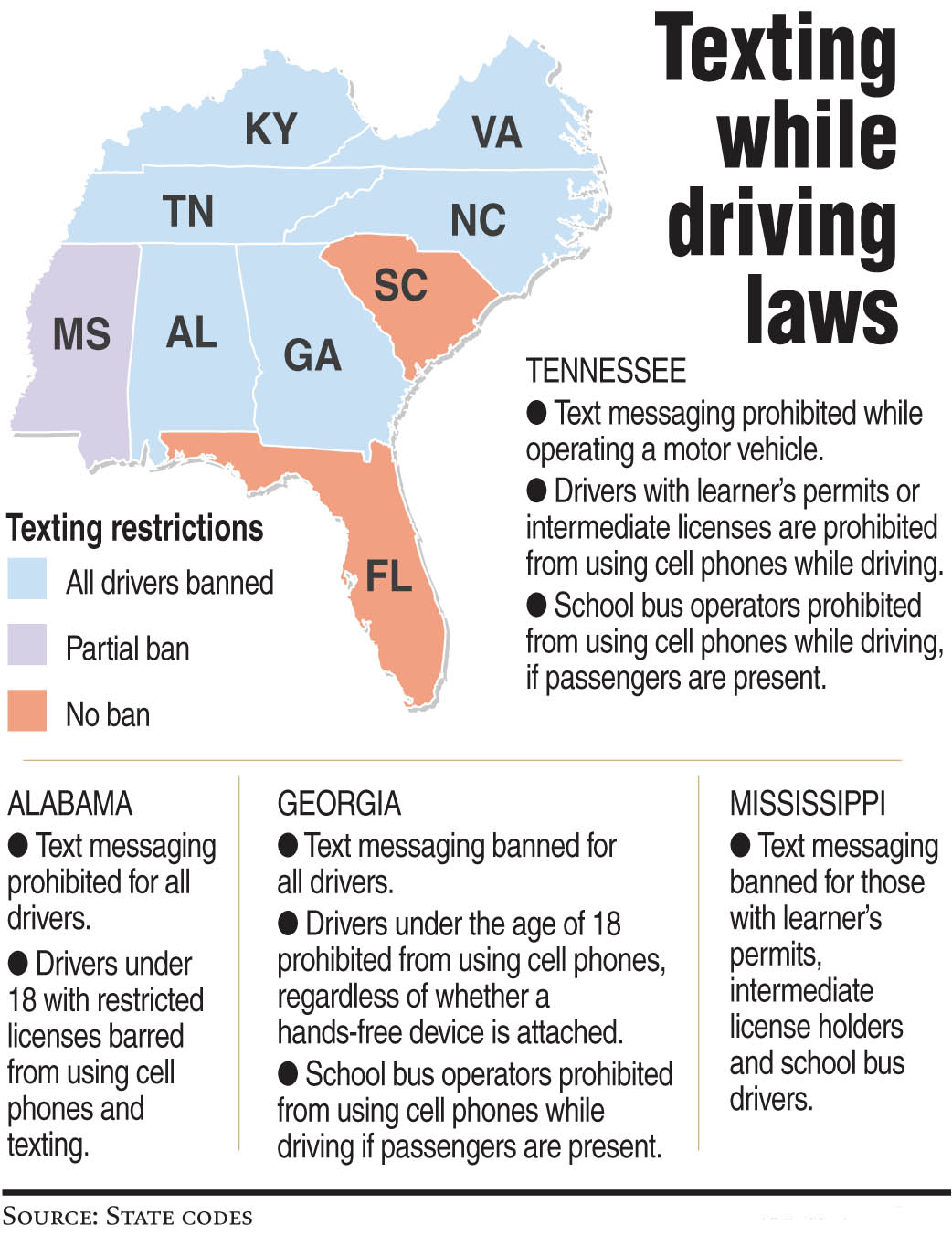AT&T offers crash course on danger of texting, driving
Friday, January 1, 1904
IF YOU GO* What: 'It Can Wait' event, featuring an in-car texting-while-driving simulator* When: Today from 3 p.m. to 9 p.m.* Where: Finley Stadium, 1826 Carter St., Chattanooga* Cost: FreeDrive Mode T appThe AT&T DriveModeT app can automatically send a customizable reply to incoming texts, emails and phone calls when the vehicle starts moving at 25 mph. The auto-reply message lets friends know that the driver is behind the wheel and unable to respond.When the vehicle slows to less than 25 mph for five minutes, the app will turn off and the user can view the messages. Drivers or passengers can also manually turn off the app for immediate access.Source: Cathy Lewandowski, AT&T senior public relations manager'IT CAN WAIT' PLEDGES• I am taking the pledge because I have two friends who died in a car accident. One died last year and the other one died a couple months ago, and one is paralyzed. I do not want to go through that. #itcanwait -- Amanda, Fla., Oct. 17• My family means everything to me and I don't want to see any of them hurt due to a foolish decision while driving. #itcanwait -- Catherine, Tenn., Oct. 15• I am taking the pledge because my daughter was hit by a driver who ran a stop sign while she was on the phone. #itcanwait -- Angelica, Texas, Oct. 15Source: itcanwait.com
Imagine sitting behind the wheel of a car in the end zone of a football field, closing your eyes, stepping on the gas and driving at 55 mph to the other end of the field.
Now add two or three other cars with drivers doing the same thing at the same time.
That's essentially what happens when a driver sends a text from behind the wheel, according to research from the Virginia Tech Transportation Institute. On average, drivers take their eyes off the road for 4.6 seconds -- long enough, at 55 mph, to score a touchdown.
Or get in a wreck.
"You're 23 times more likely to be in an accident if you are texting and driving," Mary Stewart Lewis, AT&T regional director, said.
The telecommunications company's national "It Can Wait" campaign makes a stop in Chattanooga today. The campaign, which aims to stop teenagers and adults from texting while driving, features a texting-while-driving simulator.
In the simulator, the driver sits behind the wheel of a real car and wears a pair of virtual reality glasses. Through the glasses, the driver sees a digital street -- complete with mailboxes, houses, other vehicles, road signs and pedestrians.
Cathy Lewandowski, senior public relations manager for AT&T, said she tried the simulator -- and didn't do so well.
"Within 30 seconds of my attempts to text and drive, my head went right through the windshield after I crashed into a car -- going 80 mph in a 55 mph zone," she said.
AT&T is trucking three simulators across the country to show drivers the real-life danger of texting while driving and to ask teenagers and adults to pledge never to text and drive. More than 1 million people have taken the pledge since Sept. 19.
Pledgers post their promises online at itcanwait.com and are encouraged to share their messages on social media with the hashtag #itcanwait.
About 97 percent of teenagers know texting while driving is dangerous, but 95 percent say they still text and drive or know someone who does, Lewis said. She hopes the simulator will help change that.
"We've been surveying them before and after," she said. "The majority of students say afterwards that the simulator has made an impact on them."
